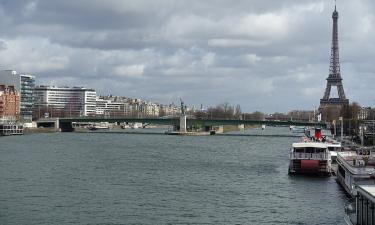Civilizations conflict in India
Another tragedy occurred in India. On Wednesday, a train with Hindu pilgrims was stoned and fired upon by a mob of Muslims. As a result, 58 people died and several hundred were wounded. Collisions between Muslims and Hindu activists have started all over the country.
The bloodshed in the Indian state of Gujarat was provoked by a prolonged conflict connected with construction of a Hindu temple dedicated to the Rama God in the city of Ayodhya. In 1992, a mob of Hindu fanatics, guided by radicals from the right-wing Vishwa Hindu Parishad (VHP) group, destroyed a mosque situated on the site where the temple was supposed to be built. A Hindu legend says that the God of Rama was born on the site, and a temple dedicated to him is to be situated there as well. However, the temple’s construction has not yet started. However, the site of Rama’s birth has become the place for mass pilgrimages. Moreover, it is a cause of Muslim-Hindu conflicts.
Islamic penetration into India started in the seventh century, when the first groups of Arab conquerors came to the north of the peninsula. Muslims have consolidated their positions in India. They created states of their own to exert influence over the peninsular. However, the majority of the population still followed Hinduism. It would be wrong to say that Muslim-Hindu conflicts have been perpetual. Certainly, there were occasional conflicts, sometimes even wars; however, the situation was rather calm most of the time.
When the English came to India, the situation started changing. The English followed a “Divide et impera” principle, and the principle was easy to introduce, as the two religious groups were at odds with each other. The English tried to avoid mass collisions based on religious differences.
When India was proclaimed independent in 1947, the situation became tense. Former British India split into two parts: India and Pakistan ( and later Bangladesh, where the majority of the population is Muslim, separated from India. A great number of Hindus escaped from Pakistan to India, abd many Muslims came to Pakistan from India.
Mahatma Gandi urged both conflicting parties to reconcile their difference until his very last day, but he was killed by religious fanatics.
The Kashmir conflict aggravated the conflict between the two states. The majority of Kashmir’s population consists of Muslims; however, there are many Hindu and Sikh. Kashmir’s status is important for India as well as for Pakistan.
With reference to India, we may speak only speak about the conflict of civilizations. It is natural that religious conflicts affect the political, economic, and social stability of the state, as the population consists of 80% Hindu and 11% Muslim. It seems to be a vicious circle: Muslims respond to every action of Hindu extremists. The end can be hardly predicted.
The violence is striking sometimes; it even surpasses the Palestine-Israel conflict. About two thousand people have died because of the temple construction in Ayodhya; the recent events in Gujarat were just another incident in the opposition between the two religious confessions. Nobody can predict how the situation will change if radicals come to power in India or Pakistan.
It is very important to establish a dialogue between Hindus and Muslims in India; moreover, such a dialogue is crucial, but rather improbable, now. The two leading religious groups are extremely hostile and distrustful to each other.
Oleg Artyukov PRAVDA.Ru
Translated by Maria Gousseva Read the original in Russian: https://www.pravda.ru/main/2002/02/28/37660.html
Subscribe to Pravda.Ru Telegram channel, Facebook, RSS!





